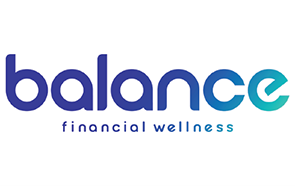moveUP Financial Wellness
Our moveUP Financial Wellness Program is all about giving you the resources you need to empower yourself and improve your financial skills. We provide a variety of self-service modules, special programs, and resources to help you reach your financial goals.
Financial Wellness Education
Financial Modules

moveUP offers free digital modules you can use to build your financial wellness. Explore curated playlists and build your own so you can reach your financial goals.
BALANCE Financial

We’ve partnered with BALANCE Financial to help you achieve financial goals through personalized, free financial guidance and resources including coaching, budgeting tools, and debt management services.
moveUP Financial Wellness Tools
The first step toward improving your financial well-being is knowing where you are. Take our Financial Health Check to see your financial health score. One you do, we can provide personalized resources to help you improve or maintain your score.
We offer a range of resources aimed at helping prospective business owners in Northeast Florida. Explore guides, tools, and templates that can help you hit the ground running with your next big idea.
Designed for 7th-12th graders, this free program features timely storylines, diverse characters, and fun interactions to engage students around critical financial topics.
Learn more about moveUP
Swipe For More >
Other Community First Resources



